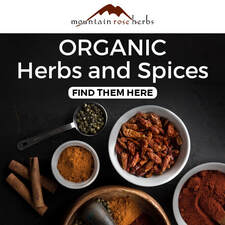My Herbs Blog |
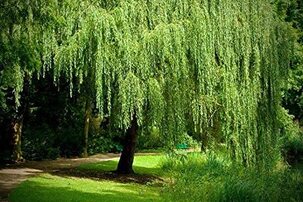 As a homeschool mom, I find every opportunity to teach my children how to incorporate nature into their lives. It is not so much about incorporating, actually, but integrating. We see nature as life and life as nature. It is not uncommon for us to spend a few hours outside a day, even in the winter time. Spring and summer is my favorite time as an herbalist, because that is when the landscape is in bloom, plants are thriving, and botanicals can be identified. A great activity to do with your children during the warmer months of the year, is to identify plants, draw them, and look up their uses. Trees are especially enjoyable, because the bark can be used to make a rubbing in an art journal, and I have found that children adore this activity. The tools you will need to perform this exercise, are as follows: an art journal with blank pages, a pack of tracing paper, masking tape, scissors, a piece of charcoal, pens and pencils, colored pencils and a thorough nature identification book. I suggest that before you begin you make a plan for the area in which this lesson will take place. You may have the perfect yard with a variety of trees, or you may need to consider going to a friend’s house, a relative’s, or a park. This activity is easier, if as the adult, you already know some of the tree species. If not, you can enjoy this activity more fully with the children, or enlist the help of someone who has lived in your locality for a long time. I have found that the older generation has extensive knowledge, when it comes to identifying plant species. If you have a willow tree that can be identified, I advise you start there. This tree is easy to identify correctly, and you can even read the story The Giving Tree, by Shel Silverstein, with your children before beginning. The White Willow tree is a short, sturdy tree that grows 30-60 feet. Willows have leaves 3-6 inches long, resembling green fingers. The willow bark is smooth and red-brown to green-brown in color. 1 When you approach a tree, ask your children if they know what the tree is before commencing. You may be surprised what your children already know. After pinpointing your tree, have your child open a page in their art journal. Write the name of the tree, with the scientific name; White Willow is Salix alba. Then have the children draw a little sketch of the tree. Encourage them to do their very best, and not to worry about being perfect. It is important that they try this activity. After a 15 minute drawing break, help each student hold a piece of the tracing paper up to the tree bark. If you hold the paper for them, they can use their hands to grapple with the charcoal. The charcoal needs to be held horizontally with the flat edge and gently rubbed over the paper to form the impression of the bark. You may need a few attempts to get a good rubbing. Then cut out the best rubbing and tape the piece of paper to a clean page in your child’s art journal. Again label the page with the name Willow a.k.a. Salix alba. The last part of this lesson is to talk about the medicinal benefits about the tree, parts used, and history of its usages. Some of this information should be written on a fresh page, right after the artwork of each tree. Leave a blank page in the journal to divide the space between identified species. Willow bark has been used for over a thousand years to relieve pain. Salicin is an active component in White Willow bark, and is the forerunner for the drug aspirin. Apart from the constituents in salicin working to relieve pain, it also reduces inflammation. 2 The Cherokee, Blackfoot, Iroquois and other Native American tribes used closely related species for headache relief, fever and chills, and for muscle and joint pains.3 Researching the historical compilations of each tree identified, will result in some interesting folklore, that your children are bound to remember. The “weeping” willow as it is commonly named, may partially have received that nickname from the branches that arch over, bending to the ground. In traditional folklore, the willow is associated with death, heartbreak, sorrow, and lost love. In the Bible, it is said that the children of Israel, when taken into captivity by Babylon, mourned under the willow tree. In medieval times, sprigs of willow were worn as signs of grief and mourning. 3 I hope that through this article I was able to give the reader an outline of an activity that can be repeated numerous times with many plants, trees and herbs. I also encourage you to add your own twists and spins to my very basic lesson. Any children participating in this activity may also have creative ideas to add this study. You could even go so far as to acquire the dried bark, or herb and have your pupils smell, or taste the said plant, when applicable. In my own herbal apothecary I keep dried willow bark powder, and have used it for fevers and to relieve pain from childbirth. Try to demonstrate as many connections from the earth to the home and uses in life that will bridge the nature gap, that you as an adult may understand more clearly. Have fun! 1 Fun with Nature, Burns, 1999, p.243 2 The Herbal Drugstore, White & Foster 2000, p.243 3 Desk Reference to Nature’s Medicine, Foster & Johnson p.366-367 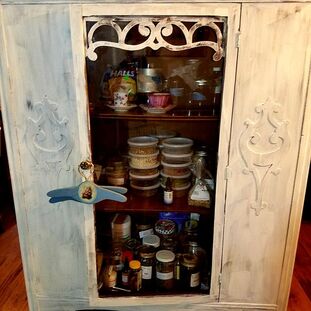 One of my Herb Cabinets "Apothecary." One of my Herb Cabinets "Apothecary." A number of years ago, I started making my own creams, salves, and liniments, and slowly replaced all of my pharmacy bought items, with all-natural herbal remedies. All items in my new medicine chest are made by the plants that grow on my property and neighboring vicinity. I think in actuality, I have my own pharmacy with hundreds of items, from herbs, to pure vegetable oils, jars, and even standard tools like bandages, and cotton swabs. My medicine chest is really what I like to call my Herbal Apothecary, and in our family, we use many items in the cabinet daily. I have actually dedicated a corner of my kitchen to the herbals that I make. I have 2 wooden stand-alone cabinets of that are not only attractive, but very useful. I chose pieces that had closed fronts to keep the natural light at a minimum. Any kind of chest, cabinet piece of furniture, or other creative storage space can be used to make your herbal medicine chest. Maybe you have a big pantry, and you can dedicate a section for your herbs, or maybe you have a perfect cabinet in the kitchen for easy storage and access. Just avoid putting your items in the bathroom, near a stove or natural light source. The location should be easy to access if you have a quick need, but also relatively safe from small children. Nothing I make would harm a child if they got into my apothecary. Most herbs for “medicine” taste bitter and that would be enough of a deterrent, and nothing is toxic or poisonous. If at all possible collect your own plants either from your garden or from fields, stream beds, and the woods. Make sure the soil and location is healthy and free from chemicals or other run-off that would harm the plants, and thereby you. One of the best determinants is to look at the plants size; small, withered plants, with brown leaves are probably either A. not getting enough nutrients, or B. absorbing toxins from the soil. It may be too late in the season to collect your own herbs, and in that case I recommend finding a local health food store, farm, or even an herbalist who can sell you some local herbs. I find that the herbs collected and used from a person’s local environment can be more effective than those exotic and from faraway lands. There is a temptation to think- farther means better, but truly the most humble and simple “weeds” can be the most effective herbal remedies. Yarrow flowers, Achilliea millefolium would be the first item I would collect and store. Keep the dried flowers in a glass jar, to use for herbal teas. You will also want to grind some of the flowers into a fine powder and store in a small glass jar. Clean baby food jars are great for storing small amounts of herbs, seeds, and for salves. The whole flowers of the Yarrow plant are infused into a hot tea that is useful for fevers, and colds. Yarrow is a diaphoretic herb that promotes sweating and thus will help a body sweat out a fever effectively. The powdered flowers can be applied to cuts to stop bleeding and promote healing. Another powdered herb that I always keep in my medicine chest, and which also stops bleeding even more effectively is cayenne pepper. Cayenne, Capiscum annum can be grown in your garden, and after the peppers have been dried, ground up finely into a powder. The powder is especially useful as a first aid item. Cayenne pepper applied to cuts, with stop bleeding, like a clotting factor. Cayenne pepper can be mixed with some water, juice or milk and drank in cases of shock, or hypothermia. Cayenne is also beneficial for stabilizing the blood flow in the body, and stimulating digestion. Although a spicy herb, spice, and condiment- Capiscum is definitely something I keep on hand. I believe I have at least 4 ounces powdered at any given time. My singularly favorite herb, and plant that I keep in my herbal apothecary in numerous forms, is Black Walnut, or Juglans nigra. The green hull is the part of the plant you want to use. It contains the chemical juglone, which is antibacterial, antiviral, antiparasitic, and a fungicide. This plant is so incredibly useful, and the trees are so exceptionally plentiful. Most people throw or burn away the green nuts, finding them a nuisance. I keep the tincture of the green hulls in my apothecary for sore throats, toothache, and for a quick application to skin rashes. I also make a black ointment, and one of the main ingredients is black walnut hull powder. The ointment is used for almost every kind of bump, blister, cut, scratch, or splinter. I even freeze the hulls to preserve the precious juice over the winter. When you thaw out the slices of the hull, you can use the slices to rub on fungal infections of the skin. It works quickly to take away itch and discomfort, but beware, you will get stains on your skin for a few days from the juglone. Comfrey leaf, Symphytum officinale, is a must in your herbal medicine chest. The leaf of this herb should be dried and stored in glass jars. I would suggest storing 1 lb. for the winter. If you grow it yourself, you should have no problem collecting that amount, because this plant spreads fast, and has large leaves. It is also very easy to dry. In cases of bruising, straining, spraining or aching, make a large pot of comfrey tea. I use 1 heaping Tablespoon of dried comfrey leaf, per cup of water. Soak clean white cloths in the tea and wrap around the affected area. Cover with saran wrap, and another dry cloth and leave on for 30 minutes. Repeat 3-4 times a day or more for acute pain. You will be amazed at how quickly your body responds to the healing powers of this plant. The fifth herb is also considered a spice, and spices and herbs are often all called herbs, and that is mustard powder. Mustard is in the family Brassicacae, and in the Northeastern part of the United States, it can be found growing along fields, roadsides, and empty lots, every spring. The plants are easy to identify by their bright yellow flowers. I have not personally gathered my own seeds, but I pick the leaves and eat them raw or in green salads as a spring tonic. I find you cannot really make a mistake when purchasing mustard seeds, unlike other herbs. If at all possible buy the seed, before it has been ground which will ensure the best potency. You can grind your seeds in a small coffee grinder. I would have ½ a pound on hand at any one time, and grind up 2 ounces to store in a glass jar. That way, if you have an urgent situation, you do not have to take time grinding your mustard seeds. I like to use the dried powder weekly in hot foot baths. The properties from the mustard seeds soak into the soles of the feet and through the body with help of the nervous system. I find that doing this weekly is relaxing, and keeps a body a little more resilient. If a cold comes upon you unawares, and you have chest congestion, a mustard plaster over the chest works wonders, and of course you will want to do the foot soaks with mustard powder as soon as you feel under the weather. To do a mustard soak, prepare a large bowl, or bucket with very warm water. It should be hot, but not too hot. Sit in a comfortable chair with a cup of Yarrow tea, or whatever delicious tisane you have on hand. Mix ¼ cup of mustard powder into every gallon of water. The water should come up to mid-calf. Sit with your feet submerged for at least 20 minutes. After doing a mustard soak, rub your feet with sea salt and dry thoroughly. Lay down and take a rest. Repeat daily if ill, and continue weekly for cold prevention. As I said before, the items I have in my herbal medicine chest are numerous. I probably have at least 100 different herbs, and mixtures and other helpful tools. However, with just six different herbs, you can use each plant at least 3 different ways, which gives you 18 different herbal remedies, minimum. If you are new to herbs, it is best to start slowly, and become really familiar with a few plants, before branching out to more herbs. I want to leave you with one more set of instructions with the mustard powder, as it is very helpful. It does require another herb that could be your number 6 in your apothecary. That herb is Slippery Elm, Ulmas rubra in Latin. Slippery elm is terrific for stomach complaints and any inflamed skin inside and out of the body. You will want to mix your mustard powder with slippery elm, before making a plaster, because the mustard powder brings a lot of heat to the skin. In a small ceramic bowl, mix 4 Tablespoons mustard powder, and 4 Tablespoons slippery elm powder. Add small amounts of water slowly and stir until you have a paste-like consistency. If you are the one ill, try to get some help with this application. You will also need two clean towels. One for laying on, and one for when you get up, just so you do not make a mess where you were laying. You will need to remove your shirt and I like to rub some olive oil on my chest first before applying the paste. After rubbing in the Extra Virgin Olive Oil, apply a thick layer of mustard plaster on the chest area, avoiding sensitive skin areas. It is best to remain laying during application. You can set a timer for 10 minutes, but if you feel too hot before the timer goes off, you may wash off the plaster. If you can keep the plaster on longer than 10 minutes, keep on as long 20 minutes before washing. You will be surprised at how red your skin will look. The mustard brings a lot of blood flow to the chest area, which will help with bringing healing to a congested respiratory tract. If after washing off the mustard plaster, you still feel hot, and even uncomfortable, get a cool wash cloth and lay it on your skin for another 20 minutes. Like I suggest after the mustard foot bath, lay down and rest after completing this remedy. I find that a good rest after mustard applications really does wonders. If you can master the application and use of these 6 herbs, you will be well on your way towards a bit more freedom, and self-reliance for yourself and your loved ones. Do not worry about making mistakes, you probably will. Herbs can be very forgiving, and will teach you along the way. RECIPE for my BLACK Walnut Tincture You will need: -8 Green Black Walnut Hulls (fresh) or -1/2 ounce Black Walnut Hull powder -Large clean quart jar with lid -40 Proof Alcohol (Vodka is preferred) -2 cups high quality water -Blue painters tape and a sharpie marker -Knife and cutting board -Old Rags -Gloves (optional) Directions: Making the Black walnut tincture can be a messy business. The hulls will stain everything they touch. That is why I suggest old rags, and you may even want to use an old cutting board, versus a nice new one. If you do not wear gloves, your hands will stain a deep yellow, and then almost turn a brown or black color wear the juglone gets on your skin. This lasts a few days, so gloves are recommended. On your cutting board, slice pieces of the hulls off the ball of the walnut. There is a large inner shell in the middle, so you have to cut around it. As you slice pieces, put them into your quart jar. You should have enough slices to fill just above half way. When you have finished cutting, you will then pour your water into the jar until the water line gets half way on the jar. Then, fill the jar the rest of the way with your Vodka, leaving a 1/2 “headspace at the top of the jar. You can then put on your lid tightly and label with the blue painters tape. The information that should be on the label is as follows: -Date, -Herb material,- Where you obtained your herbs,- and menstruum (liquid in the jar). Lastly, sit you freshly made jar of Black Walnut tincture on a sunny window sill. Make sure you put the old rags under the jar, because it may leak a little and remember the liquid will stain. Let this sit for two weeks before straining off the hulls, and rebottling the precious liquid. Alfalfa- A Nutritive Herb Known as Medicago sativa by the herbal enthusiast. This plant is a deep-rooting perennial with numerous small clover-like spikes of blue or violet flowers. The herbage is green and succulent and has often been used as an agricultural crop for livestock. It yields 2 abundant crops in a growing year, and is relished by horses and cattle alike, containing enough nourishing properties to fatten the animals and enrich their milk. Just as alfalfa can add weight to animals, it is also useful for people who are undernourished. To increase body weight, make an infusion of 1 oz. of herb, to a pint of water and drink in full cup amounts. 1 Also known as lucerne, alfalfa is native to Iran. Alfalfa is thought to have been introduced to Europe during the Persian invasion of Greece in 491 CE, and introduced to China in the 2nd century BCE. In Europe it was used in times of hardship and food shortage such as during the Spanish Civil War (1936-1939). This plant has a disposition that allows it to grow in many countries worldwide, and in a variety of climates. It does grow best, however in warm temperate and cool subtropical regions. Alfalfa is a member of the clover family and has leaves with 3 oval leaflets. In the summer it is identified by its blue/ purple flowers.2 In ancient China the people thought “what is good for your cattle is good for you, too.” The Chinese people fed their animals alfalfa, which was enjoyed so enthusiastically, that the vegetable was soon incorporated into their diet and physicians were using it to stimulate appetite and treat digestive problems. In ancient India, traditional Ayurvedic physicians also used alfalfa for ulcers, as well as arthritis pain, and fluid retention. The ancient Arabs fed it to their horses- which made them ‘swift and strong.’ They called alfalfa al-fac-facah, meaning “father of all foods.”3 Spain brought alfalfa to the Americas, where it became a very popular forage crop on the Great Plains. The pioneers believed that if it was good for the cattle, it would be good for the people too. Alfalfa was utilized to treat arthritis, boils, cancer, scurvy, and urinary as well as bowel problems. After the Civil War, alfalfa fell out of favor as a healing herb, and it took nearly 200 years for it to reemerge as a salad item during the health movement of the 1970’s.4 I remember as a child my mother use to sprout alfalfa seeds in a jar. I loved to watch the little seeds spring to life and found them quite enjoyable mixed into my salads. As a young woman, I would often buy sprouts in the super market, but they never tasted quite as good as when sprouted at home. When my own children came along, I began sprouting seeds with them. I think there is something fascinating for children, especially, to see a plant spring forth, from a tiny seed. My oldest son in particular loves sprouts, and I have often found that if a person is especially fond of a certain herb, good chance that they really need it in their diet. He will eat an entire jar of sprouts by himself, without any dressing. “Make Your Own Sprouts” - A mason jar - A small screen top or some cheesecloth - Alfalfa seeds (you can also sprout many other seeds) - Distilled water - A cool cabinet space In the mason jar, fill a baseline amount of seeds at the bottom of the jar. I would pour maybe ½ inch or less of seeds into the jar. They will really “sprout!” Fill the jar about halfway with water and let the seeds sit in the water over night. Take the screen or cheese cloth and drain the water. Rinse the seeds one time with more water, and then drain. At this point you can place a piece of cheese cloth on the top of the jar and let the seeds sit overnight. The next day, you want to rinse with water again, so the seeds to do not dry out too much. Drain the water, and let the jar sit again. Continue and repeat for 3-5 days. You may need to check on the seeds. If they are getting to dry during the day, and if so, rinse twice a day. The sprouts will continue to grow and grow. When the jar is filled with sprouts, you can then transfer the little plants to another container to store in the refrigerator. Use immediately and try to eat all of them within a week. They can get soggy or spoil if you keep them too long. The leaves of Alfalfa, called Lucerne in Europe are rich in protein, calcium and other minerals, vitamins A, the B-group, C, D, E and K as well as 8 digestive enzymes. This plant has been well researched, compared to other herbs, and modern research has found that it is really beneficial for controlling cholesterol levels. According to Desk Reference to Nature’s Medicine, “reductions in blood levels of total cholesterol and low density lipoproteins have been reported in animal studies and in a small number of human cases.” There have also been several studies with animals reporting reductions in arterial cholesterol plaques also. A small number of animal studies report that alfalfa may also reduce blood sugar levels. Although research has been promising, more data is needed to elicit more conclusive evidence of its efficacy.5 In Rosemary Gladstar’s book Herbal Healing for Women, she exhorts expectant mothers to pay attention to “fixing” poor dietary habits, which are more than likely the cause of fatigue during pregnancy. She continues to explain that a growing baby needs a tremendous amount of nourishment. If the mother’s diet is not rich enough, than the nourishment will come from her own reserves. She shares an incredible tea that can be safely drunk every day and supplies the mother with the iron, calcium, protein and other trace minerals needed for a healthy pregnancy. She calls it “Uplifting Tea” and it contains raspberry leaf, nettle, peppermint, alfalfa, squawvine, and ginger root.6 Tea inspired by Rosemary Gladstar’s “Uplifting Tea” 2 parts raspberry leaf 2 parts nettle leaf 4 parts peppermint 1 part alfalfa 1 part yarrow ¼ part ginger root dried Instructions: Mix all the herbs together in a sealable container, like Tupperware. For every quart of water, use ¼ cup of the herb mixture. Boil your water on the stove. Add ¼ cup of the herb mixture when the water has reached a boil. Immediately remove from the heat and cover for 10 minutes. Strain and serve with Almond milk and honey. *Drink 4 cups a day. Taking the time to sit and enjoy a cup of tea is a great way to slow down the fast pace of modern society. I have often heard mothers tell me that they do not have time to make tea, let alone sit and drink it. I often run into people who want the quickest, easiest solution and health does not work that way. The ability to manage stress, slow down, breath and calm the mind can do just as much for the body as the nutrients in a cup of this alfalfa tea. I have faithfully incorporated alfalfa into my diet for years, especially during the years I was pregnant. My favorite method for taking alfalfa is in powder form, and mixing it with almond milk. Typically, I will add a teaspoon of the powder into a teacup and cover with ¼ cup of almond milk and mix well. Sometimes I add a few drops of vanilla and molasses. Vanilla is for the taste, and molasses for the high iron content needed to keep pregnant mothers from the troubles of anemia. I will then drink this in the morning and it always give me extra energy for the day. My daughter who is now three loves the taste of alfalfa, and when I mix this special drink, she will drink it with a straw. I like to give this to her because she is petite, and alfalfa can add some extra weight. I am confident that she is getting her needed nutrients with this daily dose. The following is a simple recipe made from trial and error. There is always the challenge of getting people, especially children to take herbs because many of the medicinal herbs are bitter, and not naturally sweet. Alfalfa has a definite grass-like taste, and can be pleasing when you are used to it. I so not use animal milk products, and have found that almond is my favorite for “masking” the alfalfa flavor. However, I have also tried hemp milk and flax milk which are equally delicious. The blackstrap molasses is another nutritive food that can be very strong and overpowering. This too becomes mild when mixed with the milk, and vanilla just makes everything taste good. Morning Alfalfa Drink: -Tablespoon Alfalfa powder -½ cup Almond milk -1 teaspoon Blackstrap molasses -3 drops pure Vanilla extract Mix all the ingredients thoroughly in a cup or mug. Drink first thing in the morning, before starting the day. This drink can be modified or blended with frozen fruit to make a smoothie. I prefer it though, this simple way. Alfalfa is one of the most mineral- rich foods known to man, and that is because the roots can grow as much as 130 feet into the earth. It is exceptionally high in chlorophyll as well enzymes, amino acids, and carbohydrates. The minerals are in a very balanced form, as opposed to laboratory made multi-vitamins from hard mineral/ non-plant sources. This allows for easy absorption, alkaline action and neutralizing effect on the intestinal tract. Some of the conditions helped by alfalfa have been arthritis, ulcers, gastritis, liver disorders, eczema, hemorrhoids, asthma, constipation, body odor, bleeding gums, athlete’s foot and even cancer. If you have never used natural supplements, or herbs there can be a hesitancy or concern when incorporating for the first time. My suggestion is to find a local health food store, herbalist, or natural doctor for recommendations on obtaining herbs like alfalfa. I strongly discourage buying herbal products from chain stores, and big box locations. The product quality is not the same, and thus the effect of the herb is greatly diminished.7 Smoothies are exceptionally popular and can be a very good way to consume your daily nutritive needs. There can be a tendency to add to much sweetener and I try to avoid that in my own recipes. Instead I depend on the natural sweetness occurring in the fruits added to the blended mix. For this recipe, I recommend using fresh alfalfa sprouts, especially for people who are not fond of sprouts in salad or alone. The flavor can be effectively masked by the other ingredients. I always urge people to be creative about their methods of incorporating herbs. The goal is to eat them, and I am not too particular in how that is accomplished, but I try to create as many tasty options as possible for myself and others. Super Green Smoothie -1 cup full fat coconut milk -1 cup pineapple juice -1/2 cup frozen strawberries -2 Tablespoons chia seeds -1/2 cup alfalfa sprouts Blend all the ingredients until smooth. If the smoothie seems too thick, add a little almond milk until you have a creamy consistency. You can garnish with a sprig of peppermint, and sip with a straw. This drink is perfect on a warm day. It cools the body and reenergizes at the same time. The alfalfa sprouts are very easy to digest and assimilate and will have a tonifying effect on the digestive system. As an herbalist, or plant enthusiast, it is important to well versed in the knowledge of plants that aid the body in correcting organ systems, and herbs that nourish the body. Dr. Christopher calls it “cleanse and nourishing.” Alfalfa is one of those herbs that nourishes the body, and works markedly well if the body is in good and healthy condition. The more you take care of your own vessel the more able a plant is to make small adjustments, corrections and improvements on the health of an individual. We must take the time to cultivate an ongoing relationship with plants and nature and to develop a harmonious attitude towards what nature has provided for our benefit. 1 Grieve, Mrs. M. “A Modern Herbal, Volume 2.” Dover Publications, (1982): 501-502. 2 “Edible: An Illustrated Guide to the World’s Food Plants.” National Geographic, (2008): 182. 3 Castleman, Michael. “The Healing Herbs: The Ultimate Guide to the Curative Power of Nature’s Medicines.” Rodale Press, (1991): 37. 4 Castleman, Michael. “The Healing Herbs: The Ultimate Guide to the Curative Power of Nature’s Medicines.” Rodale Press, (1991): 38. 5 Stephen, Foster and Rebecca L Johnson. “Desk Reference to Nature’s Medicine.” (2006): 12-13. 6 Gladstar, Rosemary. “Herbal Healing for Women.” Simon & Schuster, (1993): 186-187. 7 Balch, James F. and Phyllis A Balch. “Prescription for Nutritional Healing 2nd ed.” Avery Publishing Group, (1997): 73.
4/4/2021
7 Herbs for Mom's and Kids I am a mother, and momma of 5 children. Each of my children has helped me to develop a greater sense of love and connection to the healing plants given to us. Just like every child is different with his or her unique sensibilities, so too are all the herbs. They are like little children with personalities, qualities, and abilities that really makes it hard to favor one over another, but rather to love them all equally, as I do with my own children. |
3/16/2021
Quick Easy Recipes with HERBS
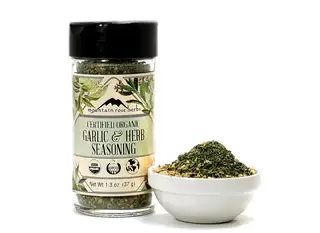
- My favorite place to buy my herbs is: Mountain Rose Herbs. They herb quality is superior. I recommend shopping through this company, unless you are gardening and growing and drying all your own herbs, which is of course the best source. If you are like me, you need some help!
Basil Dill Veggie Dip
8 oz, of Plain Hummus
1/4 cup chopped fresh Basil
1 tsp. Mountain Rose Herbs (Garlic & Herb Seasoning)
Organic garlic & herb seasoning is a delicious salt-free addition to your spice cabinet offering pungent garlic and herbal aromatics. The substantial pieces of minced garlic add a spicy kick to any dish with outstanding texture and flavor. Matched with flavorful oregano, thyme, and parsley this blend can add an Italian or Middle Eastern flair.
1/2 tsp. minced Garlic
Sprinkle top with Pepper
You can either make your own Hummus, which I am not going to get into here, or you can buy a plain variety. I like Baba Hummus. It is easier to start with hummus that is pre-made, and you can dress it up quite a bit with a few other ingredients. In a small bowl mix the fresh Basil, the Mountain Rose Herbs Garlic & Herb Seasonings and the minced garlic. Finish by sprinkling the Pepper on top and serve with your favorite vegetables.
Veggie Lasagna with Oregano
Serves 6
One box of any easy bake Lasagna noodle. (I am gluten free now and no longer make this particular recipe, but it is an oldie but goodie. One of my favorites. You could substitute the wheat noodles for gluten free lasagna noodles, if you are gluten free like me.)
1 Jar Tomato sauce
1 lb. Hamburger
1 Diced onion
2 Cloves garlic
7-8 Mushrooms sliced
1 Cup shredded zucchini
½ Cup diced pepper
1 8 oz. Container Ricotta cheese
1 16 oz. Package mozzarella cheese
½ cup Parmesan cheese
1 Egg
½ Cup chopped fresh parsley
1 tsp. Dried oregano, or 1 T. fresh oregano
Sea Salt and Pepper
In a saucepan, brown your hamburger; when almost finished add your diced onion, garlic, mushrooms and pepper. Sauté for a few extra minutes. Next add your tomato sauce and simmer about 4-5 minutes. Meanwhile mix all your cheeses, your egg, parsley, zucchini and oregano oil in a bowl. Sprinkle with some salt and pepper.
In your baking dish spoon about a cup of your sauce mixture. Then begin a layer of lasagna noodles. Layer your ricotta cheese mixture and more sauce. Put another row of lasagna noodles, then any remaining ricotta and more sauce. Sprinkle some extra parmesan on top and bake at 400 degrees until bubbly.
Salmon with Lemon
1/3 Cup raw honey
2 tsp. Minced garlic
2 T. Olive oil
2 T. Apple Cider Vinegar
1/2 cup Fresh Lemon juice
1 T. Fresh parsley
Sea Salt and Pepper
2- 2 ½ lbs. Wild Caught Salmon
Let this marinade for 1 hour. Then broil at 375 degrees for 15 minutes. Serve with fresh asparagus- lightly broiled and seasoned with salt and pepper.
Grapefruit Cream Cheese Cupcakes
You can use any box mix you like for your cupcakes. I like Lemon poppy seed. Of course, you may make your own from scratch. The premix I have linked, does not include poppy seeds. If you want to add them, you will have to do so separately.
Follow the bag/ box recipe for the batter.
ADD
2 drops of Young Living Grapefruit Vitality oil into the cupcake batter mix. (ONLY USE YL Vitality oils in food).
1 T. poppy seeds to the batter
Continue to pour into cupcake trays and follow baking instructions. Definitely wait until completely cool before icing.
For the icing
8 oz. Cream cheese
¾ Cups Organic powdered sugar
2 T. Maple Syrup
1/2 Cup coconut oil
3 Drops Young Living Grapefruit Essential Oil
(Icing for 24 cupcakes)
Use a blender, or other food processing tool to blend all the icing ingredients, until smooth. You can put into the fridge until the cupcakes are cool enough to ice. This is a refreshing and uplifting cupcake. You could use grapefruit juice (squeezed from the grapefruit) to replace the essential oil.
3/15/2021
Gluten Free Kid's Book- MINE!
I am so happy to share my book! I wrote this book in 2017-2018. I wanted to write a kids story about kids that are gluten free. Since I kept thinking of the word "kid" and the story refers to my kids, I wanted to make the characters goats. I love animal stories. I love them so much more than people/ kid stories. My favorites are Beatrix Potter and Berenstain Bears stories, or the Narnia books with talking animals.
I think it just triggers the imagination in a more memorable and impacting way when the characters are animals, verses people.
So I wrote this story because my own children had a hard time "stopping" eating wheat and gluten and transferring to gluten free foods. At home was not so difficult, because I bought and cooked yummy foods that were gluten free.
The difficulties arose when we would go to grandma's house or a holiday event, or special occasion or even just a sporting event. Nearly every where you go (or where we went) offered only foods with gluten. Now (a number of years since we began this journey) there are usually some gluten free options, but it is still limited.
So, I wanted to share how we navigated these different events with our own foods. I have brought food to nearly every holiday and nearly every single place we go. Thankfully my own mother is very accommodating and makes gluten free meals for us. However, we have some relatives who are not so accommodating and actually quite offended that we can not eat gluten.
In this story- which I hope will be the first of many, the goat kids are going to a birthday party where there will be pizza. Momma goat in the story, comes up with a pizza recipe that is gluten free and the goat kids love it! She then brings along this pizza to the birthday party for her children.
I have done this many times. Sometimes it is awkward, but I usually mention something to the host/ hostess before we go somewhere, and 9 times out of 10 they are ok with our food needs.
I even share my very own pizza recipe in the back of the book, so if your child or children need a yummy alternative, you can try ours!
My book is now available on AMAZON. Please share with friends and family who are Gluten FREE!
I think it just triggers the imagination in a more memorable and impacting way when the characters are animals, verses people.
So I wrote this story because my own children had a hard time "stopping" eating wheat and gluten and transferring to gluten free foods. At home was not so difficult, because I bought and cooked yummy foods that were gluten free.
The difficulties arose when we would go to grandma's house or a holiday event, or special occasion or even just a sporting event. Nearly every where you go (or where we went) offered only foods with gluten. Now (a number of years since we began this journey) there are usually some gluten free options, but it is still limited.
So, I wanted to share how we navigated these different events with our own foods. I have brought food to nearly every holiday and nearly every single place we go. Thankfully my own mother is very accommodating and makes gluten free meals for us. However, we have some relatives who are not so accommodating and actually quite offended that we can not eat gluten.
In this story- which I hope will be the first of many, the goat kids are going to a birthday party where there will be pizza. Momma goat in the story, comes up with a pizza recipe that is gluten free and the goat kids love it! She then brings along this pizza to the birthday party for her children.
I have done this many times. Sometimes it is awkward, but I usually mention something to the host/ hostess before we go somewhere, and 9 times out of 10 they are ok with our food needs.
I even share my very own pizza recipe in the back of the book, so if your child or children need a yummy alternative, you can try ours!
My book is now available on AMAZON. Please share with friends and family who are Gluten FREE!
3/6/2021
Believing Before Seeing
Is it not true that most of us think or say that we will believe something when we see it. Remember doubting Thomas? The truth is, the Universe, and Faith works the opposite. We are actually suppose to believe BEFORE seeing the proof!
What?? That is impossible you say. I know it feels that way. It most definitely does, especially when you look at your bank account, or your love life, or your current health condition. You tell yourself, you will believe when you see the numbers go up, or your spouse acting better, or even when the energy returns.
If you wait until you see everything you desire, you may be waiting a LOONNNGG time. It also may never come. The Universe was created by a God who gave us the ability to imagine what we want to see into being. All of the people in the Bible who were healed by Jesus believed before seeing.
Can you apply the same faith? I know I have to every single day. All day long in fact. If we look at current events, or dwell on any fears, we will only manifest that which becomes an emotion in our mind. What I mean is this....
Let us say you look at your body where it is right now. Perhaps you are overly tired. Perhaps you need to get in shape. Perhaps you have just met with a big health challenge. If you look with your eyes, then turn what you see into a negative emotion, such as fear, frustration, worry, or anger, then you will imprint your situation into your subconscious mind. Once that happens, the subconscious has no choice but to keep manifesting that back to you.
What?? That is impossible you say. I know it feels that way. It most definitely does, especially when you look at your bank account, or your love life, or your current health condition. You tell yourself, you will believe when you see the numbers go up, or your spouse acting better, or even when the energy returns.
If you wait until you see everything you desire, you may be waiting a LOONNNGG time. It also may never come. The Universe was created by a God who gave us the ability to imagine what we want to see into being. All of the people in the Bible who were healed by Jesus believed before seeing.
Can you apply the same faith? I know I have to every single day. All day long in fact. If we look at current events, or dwell on any fears, we will only manifest that which becomes an emotion in our mind. What I mean is this....
Let us say you look at your body where it is right now. Perhaps you are overly tired. Perhaps you need to get in shape. Perhaps you have just met with a big health challenge. If you look with your eyes, then turn what you see into a negative emotion, such as fear, frustration, worry, or anger, then you will imprint your situation into your subconscious mind. Once that happens, the subconscious has no choice but to keep manifesting that back to you.
Instead of the above scenario playing out. This time, if you take a look at your body, or any current situation that you want to see changed, you approach it this way. I will write out what I would say instead.
"I am so happy and grateful that my body is my best friend. I love my body. It works so well! I enjoy food and my digestion works optimally. I absorb and digest all my food and it nourishes my body completely. I have energy all day long. I can perform at my best. My goals are being realized because I feel so good. I am affecting so many people with my positive attitude, my exuberance, and my amazing health. Life is truly a joy. My spouse is my best friend. He supports me and loves me and encourages me. We trust each other and have really good friends and support for our big goals. Life always smiles on me."
WOW! RIGHT! That sounds amazing. Well, I want you to do this. I want you to reword and say out loud that which you may not see or feel right now. It's ok. It really won't hurt you to give this a try. Have fun. Be outrageous, as long as you do it. Then repeat it and read it every single day, twice a day and step forward in faith.
"I am so happy and grateful that my body is my best friend. I love my body. It works so well! I enjoy food and my digestion works optimally. I absorb and digest all my food and it nourishes my body completely. I have energy all day long. I can perform at my best. My goals are being realized because I feel so good. I am affecting so many people with my positive attitude, my exuberance, and my amazing health. Life is truly a joy. My spouse is my best friend. He supports me and loves me and encourages me. We trust each other and have really good friends and support for our big goals. Life always smiles on me."
WOW! RIGHT! That sounds amazing. Well, I want you to do this. I want you to reword and say out loud that which you may not see or feel right now. It's ok. It really won't hurt you to give this a try. Have fun. Be outrageous, as long as you do it. Then repeat it and read it every single day, twice a day and step forward in faith.
Author
Jenel Schaffer Videos on YouTube
Archives
April 2021
March 2021
February 2021
January 2021
December 2020
November 2020
October 2020
September 2020
August 2020
July 2020
June 2020
May 2020
May 2019
April 2019
December 2018
November 2018
Categories
All Art & Healing Books Dried Herbs Fresh Herbs Gluten Free Herbal Beauty Herb Consultations Homeschool Positive Mind Recipes Root Herbs Self Care Spirit Tea Watercolor



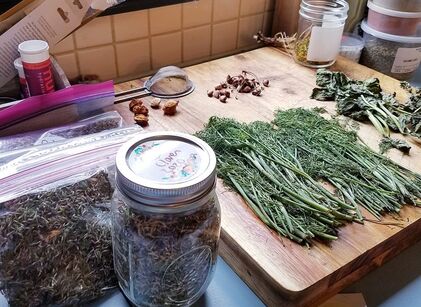
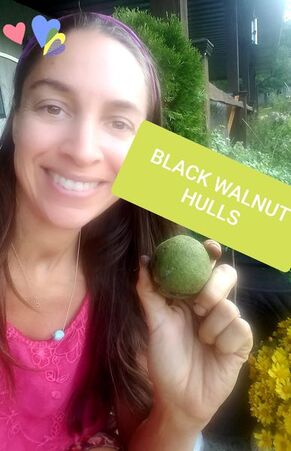
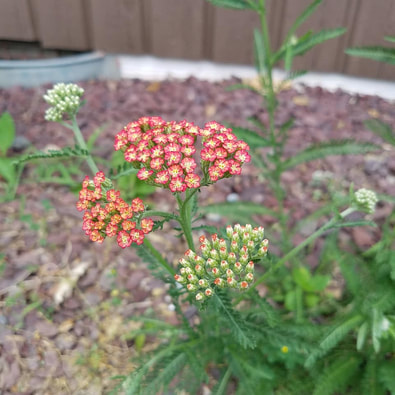
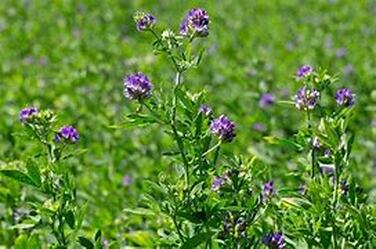
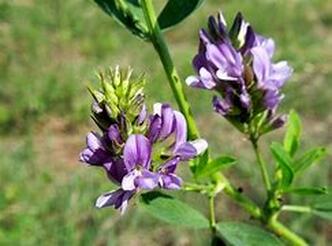
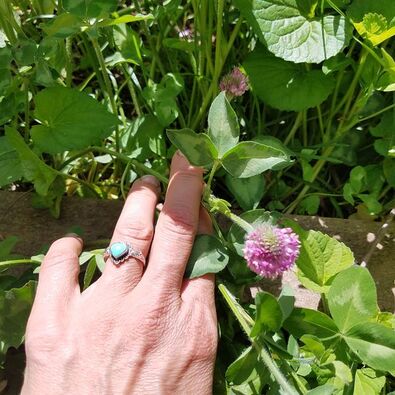
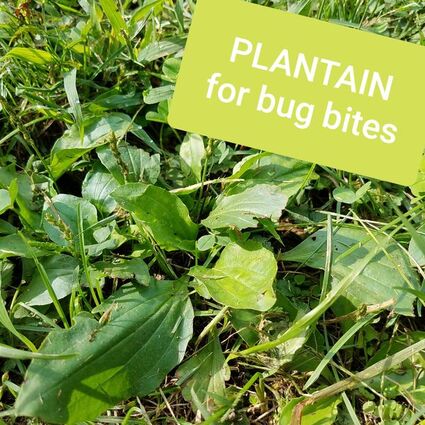
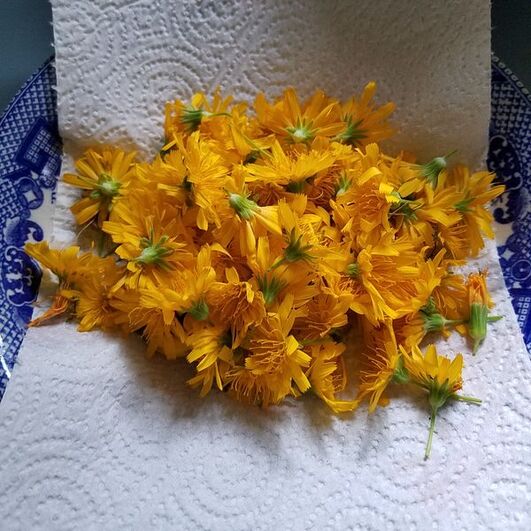
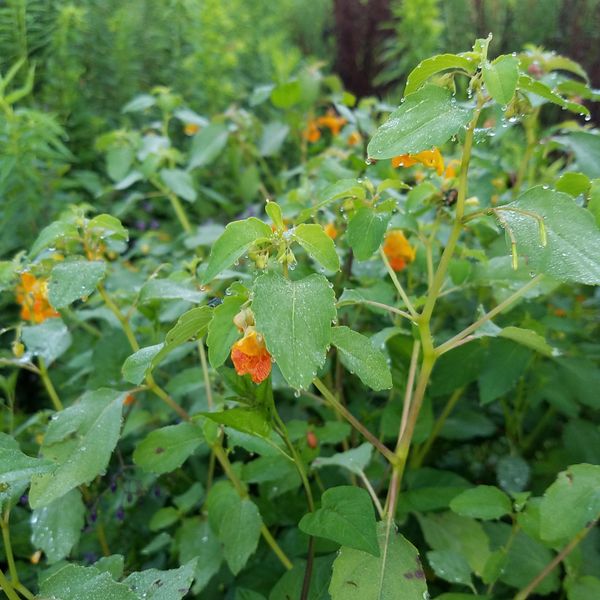
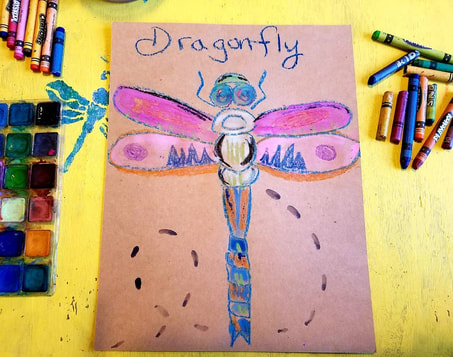
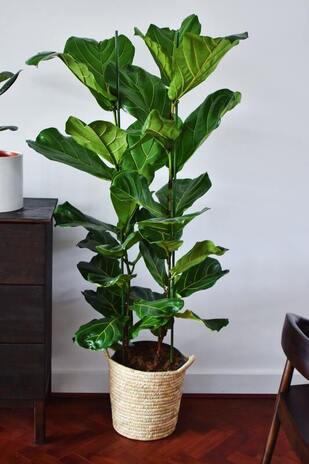
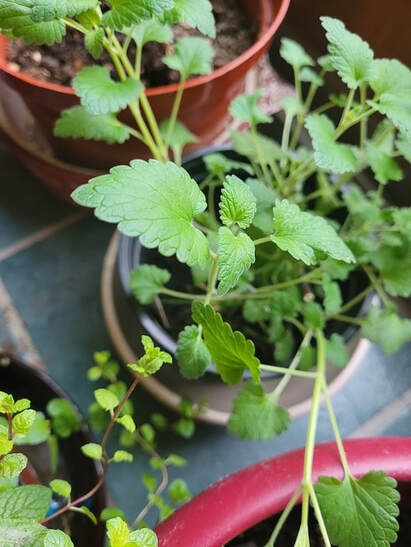
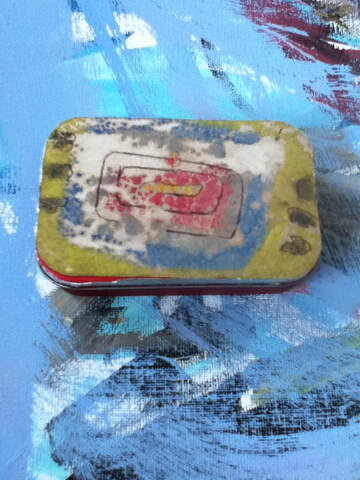
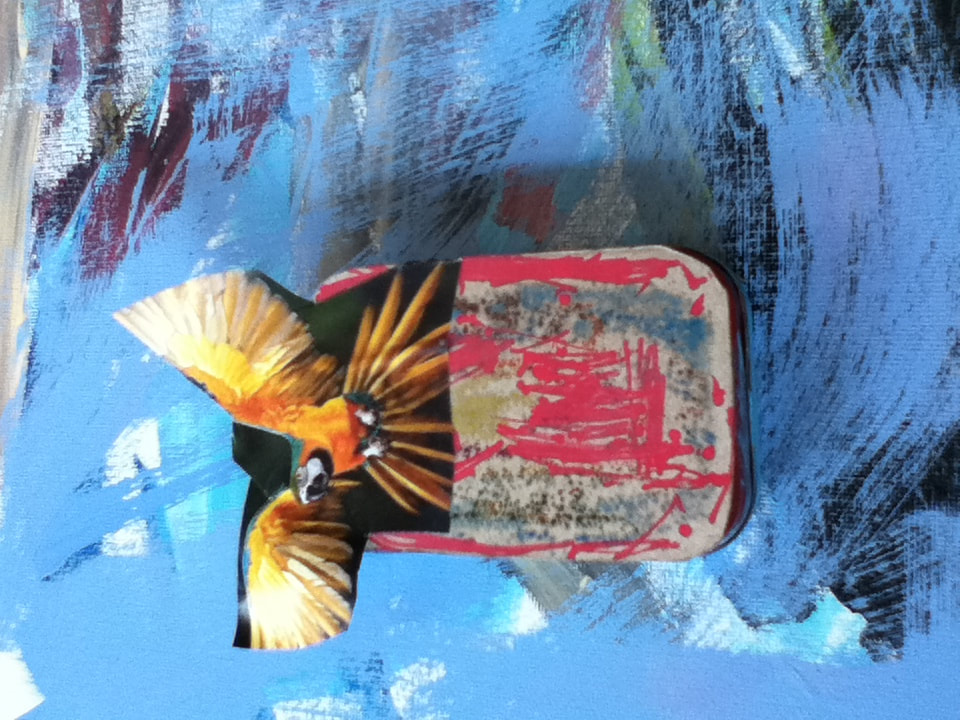

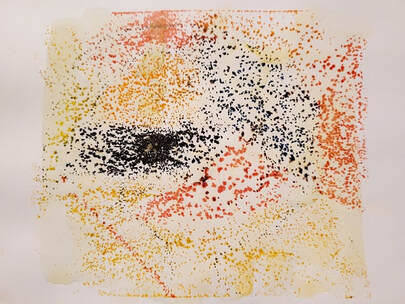
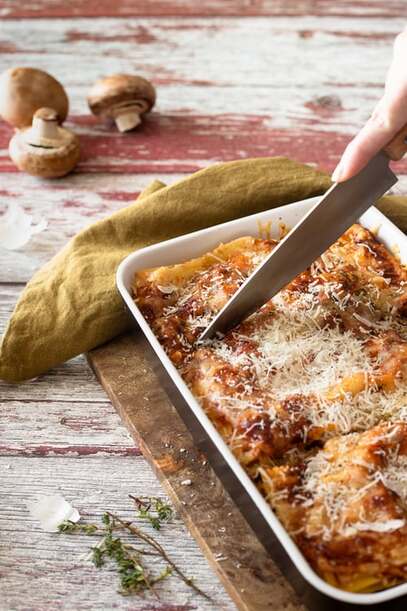
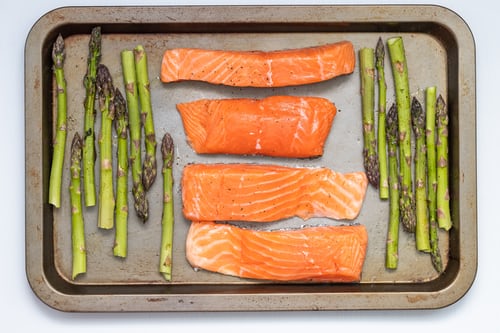
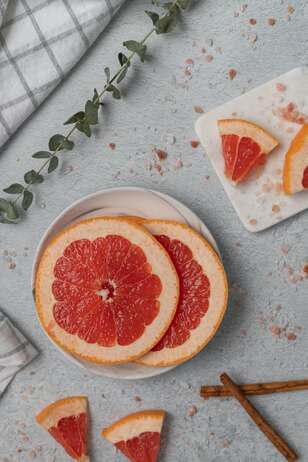

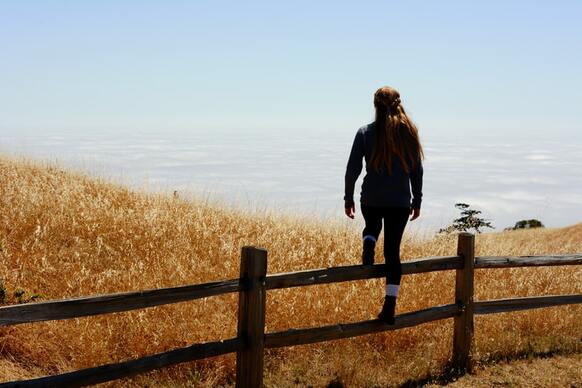
 RSS Feed
RSS Feed

